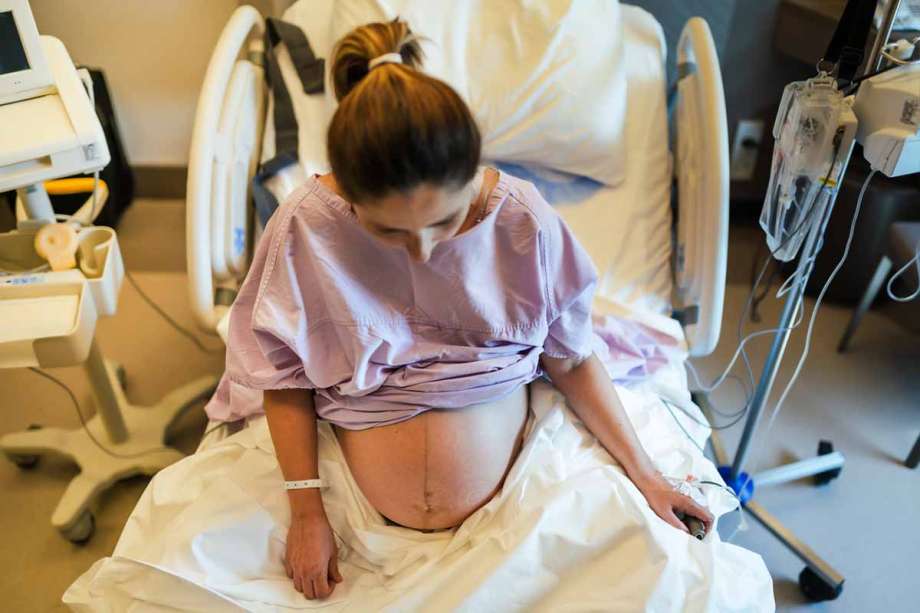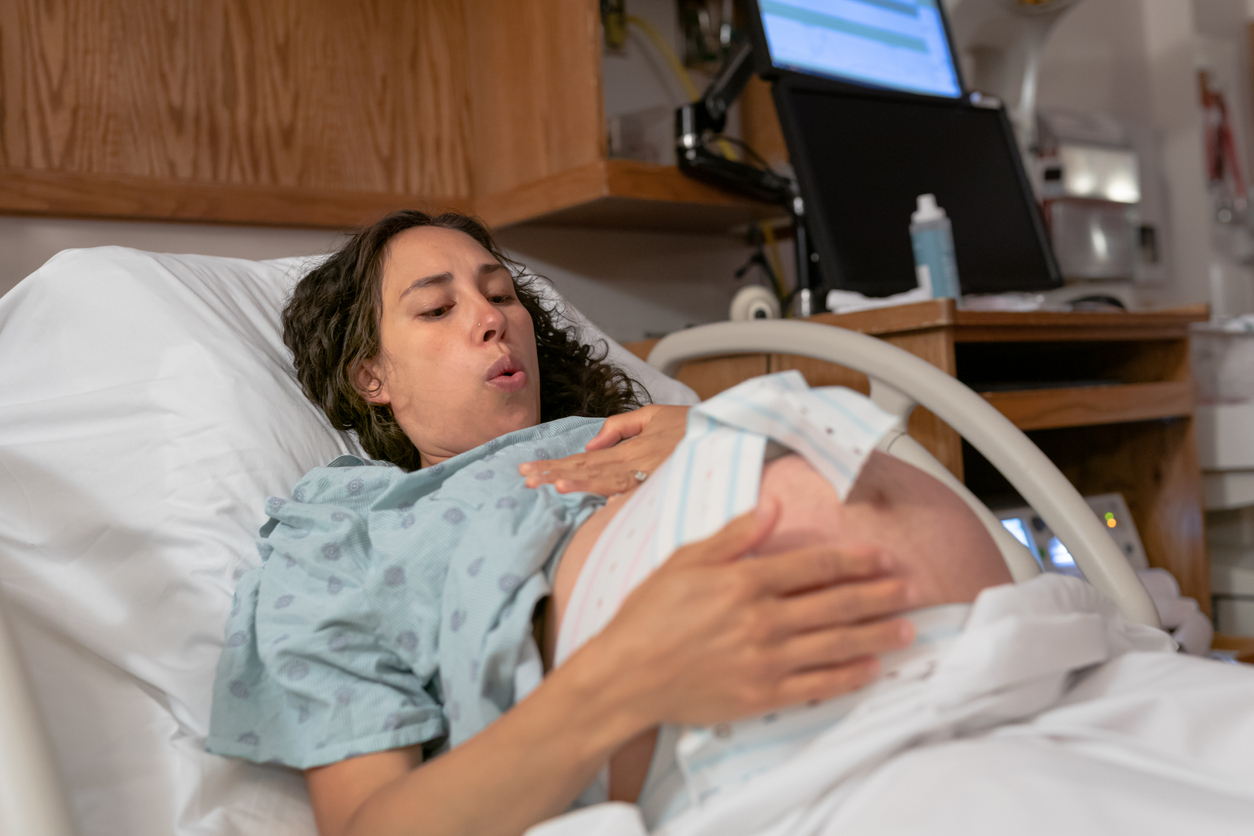Ring of Fire Pregnancy: Crowning Pain Explained

Once you’ve entered the final trimester of pregnancy, you might be feeling some anxiety about the birthing process. In particular, many first-time moms feel apprehensive about the “ring of fire” that many women experience during vaginal birth.
While the ring of fire can be painful, it’s also a sign that birth is almost over. The ring of fire is also a much shorter part of childbirth than you may have been led to believe, in some cases lasting less than 30 seconds.
Thankfully, there are some things you can do before and during childbirth to ease pain during crowning. If you’re feeling nervous about the ring of fire and want to know what you can do to manage this pain during childbirth, read on below.
What Is the Ring of Fire?
The term ring of fire is used to describe the sensation of intense burning or stinging that many women experience during the last stage of labor when the baby's head is crowning.
This sensation is caused by the baby's head passing through the vaginal opening and the surrounding perineum and is an indication of the baby's imminent birth. During this stage, the baby's head stretches and thins the vaginal tissue, causing the burning sensation that many women describe as the ring of fire.
What Does the Ring of Fire Feel Like?
The main symptom of the ring of fire is a sensation of intense burning or stinging in the vaginal area.
It is important to note that not all women experience this sensation and that it does not always cause pain. Some women describe it as a pressure or tingling sensation, while others may not feel it at all. The intensity of the sensation can vary depending on the size of the baby, the position of the mother during delivery, and the level of relaxation of the vaginal tissue.
Do You Feel the Ring of Fire With an Epidural?
An epidural may reduce the intensity of the ring of fire sensation, as it numbs the area and reduces the pain. With an epidural, you might feel a strong sensation of pressure, rather than a burning pain. However, some women still experience the ring of fire even with an epidural in place.
Additionally, it is important to note that an epidural can slow down the delivery process and make it more difficult for the baby to pass through the birth canal. This could make the crowning stage last longer than in an unmedicated birth. Be sure to discuss your options with your healthcare team before you go into labor.
How Long Does the Ring of Fire Last?
While the ring of fire or pain when crowning can be painful, it tends to be one of the shorter parts of labor. Most women find that the sensation lasts for one to five minutes during the very last part of a vaginal delivery, beginning with the baby's crowning and ending once the baby’s shoulders have passed through the vaginal opening. In some cases, the ring of fire might only last for 30 seconds.
How Do You Avoid the Ring of Fire During Birth?

If reading about the ring of fire has you feeling stressed, don’t worry! There are some things you can do to avoid or reduce the likelihood of pain during this part of labor.
1. Perineal Massage
One of the best ways to avoid the ring of fire sensation during birth is to prepare the perineum with a perineal massage. Consistently massaging the vaginal tissue during the third trimester helps to stretch and relax the area, which can reduce the intensity of the sensation.
An added benefit of perineal massage is that it can reduce the risk of tearing during delivery and it makes it less likely that you will need an episiotomy.
If you have difficulty reaching your perineum or feel uncomfortable doing a perineal massage on your own, you can enlist the help of your partner or purchase a massage tool to help you.
2. Birthing Position
It is important to find a birthing position that is comfortable for both the mother and baby, as such positions can help to reduce the intensity of the ring of fire. Shifting to sitting upright or on all fours might help ease the sensation. Some women also find that water birth is helpful for the ring of fire, as the water can help soften the tissue around the vaginal opening.
A doula or midwife can help you find the best position to reduce discomfort, and it’s important to discuss any risks associated with a water birth with your healthcare provider before making any decisions.
3. Breathing Exercises
Rather than bearing down and pushing as hard as you can, focusing on taking deep breaths when you feel pain can help reduce the sensation. If you push before your body has had time to stretch the tissue, you run the risk of tearing and increasing your pain even further.
Taking a childbirth class can be a great way to learn and practice these breathing techniques before you’re in labor.
4. Warm Compress
Using a warm compress – called a perineal pack – can help ease pain and reduce discomfort during crowning. Women who use warm perineal packs during labor, (before crowning), are much less likely to experience tearing. A warm perineal pack can help soften the skin and make it easier to stretch, thus reducing the pain you might experience during crowning.
Will I Need an Episiotomy?
If the ring of fire sensation is too intense, a healthcare professional may recommend performing an episiotomy to reduce the sensation. An episiotomy is a surgical procedure that involves making an incision in the perineum to expand the vaginal opening and make it easier for the baby to pass through.
While this procedure can reduce the intensity of the sensation, it can also slow down the delivery process and increase the risk of infection. An episiotomy can also slow down your recovery time after birth. Therefore, it is important to discuss the risks and benefits of an episiotomy with a healthcare provider before proceeding.

